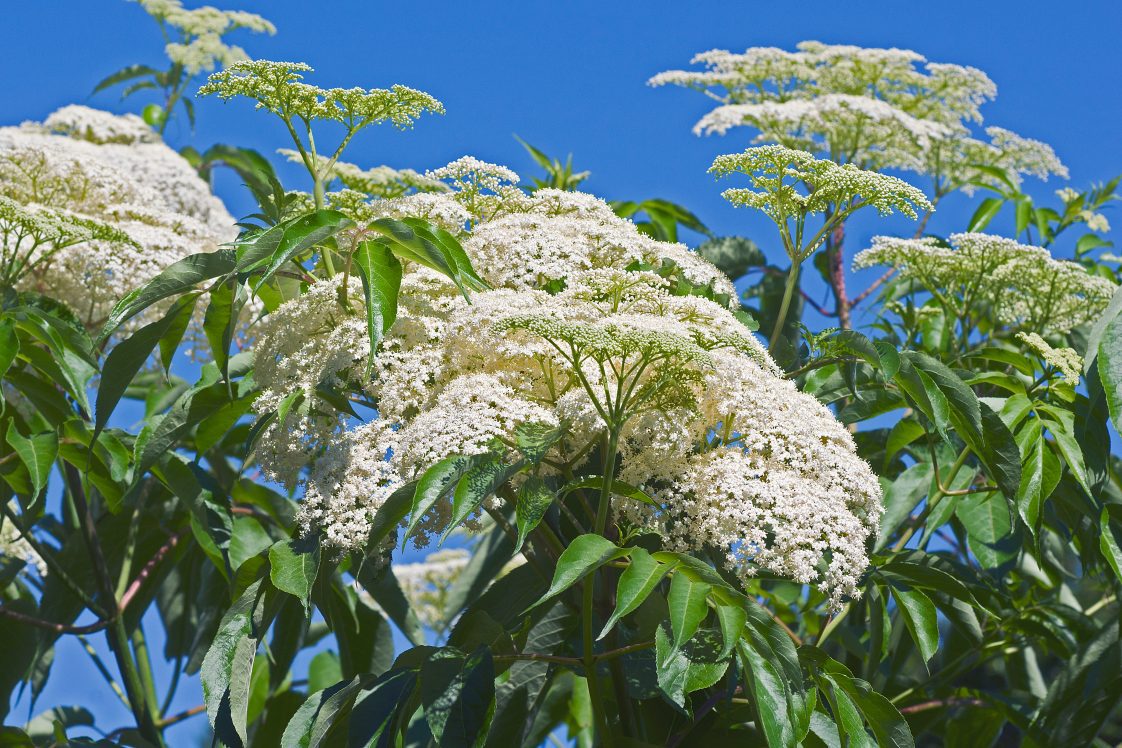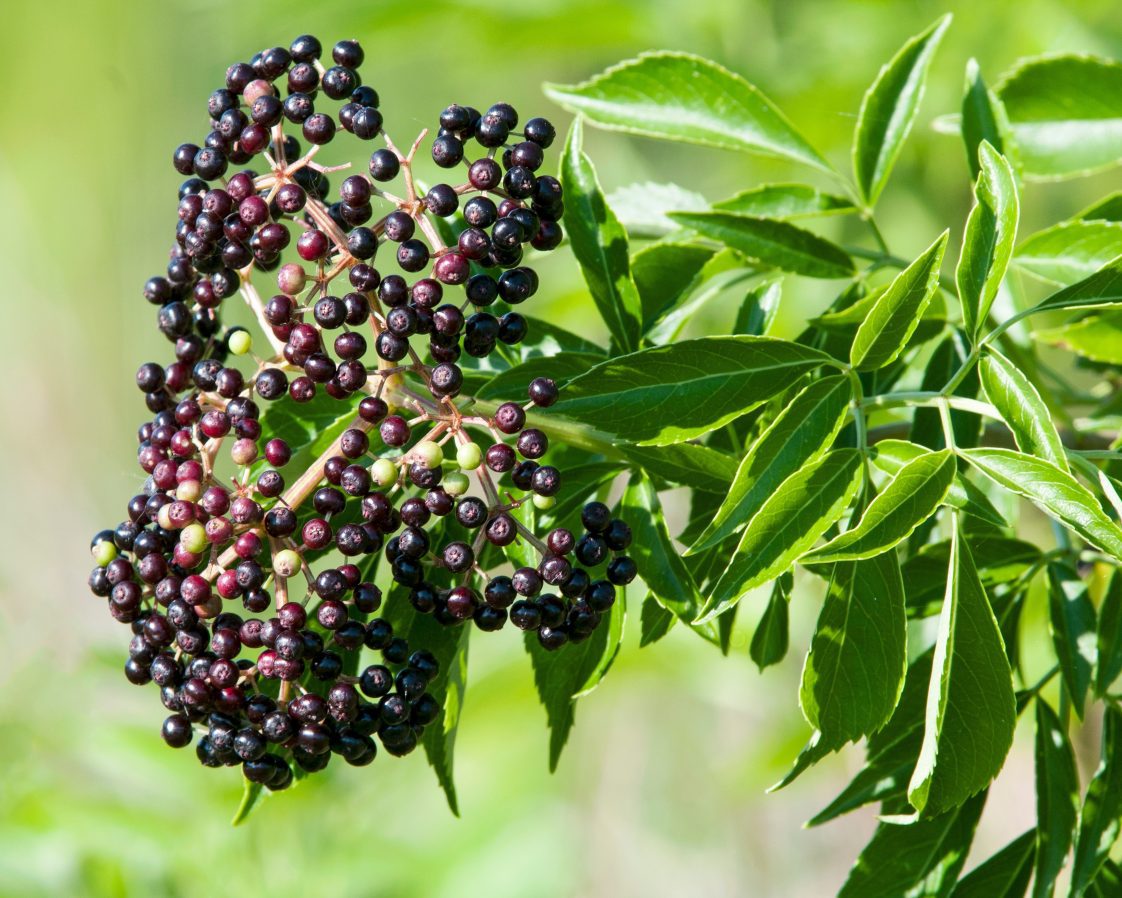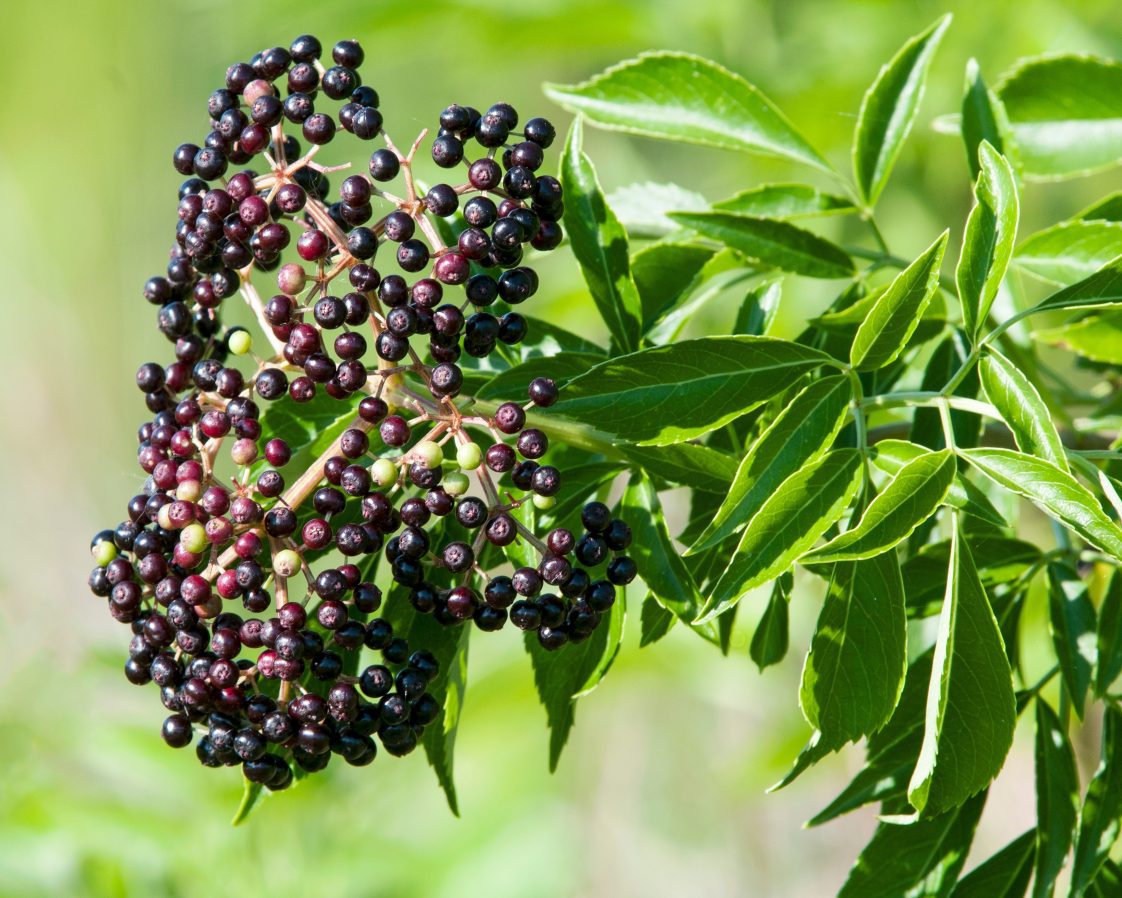Crop Production

Recent progress made in research related to elderberry breeding and management is creating new possibilities for Alabama farmers to contribute the growth of this historically consumed plant. American elderberry (Sambucus canadensis or Sambucus nigra subsp. canadensis) is native to eastern North America, including Alabama. It is closely related to the European elderberry (Sambucus nigra), which is currently the primary source for commercial elderberry products.
Uses and Safety

Figure1. Elderflower from American elderberry (Sambucus canadensis ).
American elderberry has been a part of regional diets for centuries. Known for its medicinal uses, elderberry has been traditionally used to address conditions such as the common cold and flu. Some studies suggest that elderberry has antiviral properties and a notable reduction in respiratory symptoms. However, be aware that some parts of the elderberry plant can contain toxins known as cyanogenic glycosides. These toxins are also found in small amounts in foods such as almonds, sweet cherries, and cassava. Avoid ingesting the leaves, stems, roots, and unripe berries. Only consume products made from elderflower and fully ripe berries. Juiced (deseeded) and gently heated berries from known cultivars are the safest to consume.
Site Preparation, Planting, and Irrigation
To successfully cultivate elderberries, the plants require full sun and fertile, well-drained soil that has a pH between 5.5 and 6.5. Growers can add organic matter when needed, using cover crops or a high-quality compost.
When selecting cultivars, choose ones that are meant for commercial production. While great for wildlife, wild elderberry cultivars are less viable as a commercial crop. Many older cultivars are from the northeast, but newer selections from the University of Missouri may better suit Alabama’s growing conditions. Further research trials are required to evaluate these selections, but Alabama growers may try planting cultivars that are selected for warm-weather climates, such as Pocahontas and Wyldewood, as well as industry-standard cultivars, like Ranch and Bob Gordon.
New growers should buy dormant cuttings from a reliable supplier and plant them in prepared rows during late winter or early spring. Rows should be 10 to 12 feet apart, with individual plants spaced 2 to 4 feet apart within the row.
Elderberry plants have shallow roots. Use a drip tape irrigation system to efficiently deliver water and use mulch to conserve soil moisture. Consider installing landscaping fabric for initial weed control. Remove the fabric at the end of the first growing season to allow the plants to sucker from the roots.
Management: Fertilization, Pruning, and Pests
Apply 10 pounds of nitrogen per acre 1 to 2 months after planting. For mature plants, apply 60 to 80 pounds of nitrogen per acre annually. Adjust your nutrient application rates based on results from soil tests and foliar analyses for cane fruit.
In the first summer after planting, remove flowering heads to promote long-term vigor. Once established, prune elderberries annually, preferably during the dormant season. Many commercial growers will start pruning at the end of the second or third season by mowing stems to the ground.
Removing mowed stems should reduce overwintering insects. While elderberries are relatively pest resistant, growers may encounter fungal and bacterial diseases, notably elderberry rust and bacterial leaf spot. Common insect pests include Eriophyid mites (Phyllocoptes spp.), leaf-footed bugs (Leptoglossus zonatus), armyworms (Mythimna spp.), and Japanese beetles (Popillia japonica).
Harvest and Processing

Figure 2. Unripe berries within an otherwise ripe cyme should be sorted out during processing.
Elderflowers and elderberries are currently harvested by hand clipping the entire cymes once the berries have full color. For the best quality, growers should harvest weekly, preferably early in the day, and process the berries immediately or refrigerate temporarily. Destem, sanitize, and process the berries by freezing, juicing, or dehydrating them. Growers may invest in a destemming machine for efficiency. Also, they may find that destemming is often easier with frozen cymes.
Marketing and Sales
Consider selling products to elderberry cooperatives, breweries, bakeries, herbalists, restaurants, and farmers markets. Products can include wine, juice, concentrate, extract, syrup, jelly, jam, baked goods, and beverages. Adhere to all state and county food safety laws when processing elderberries. Contact your county health department if you plan to sell frozen or processed berries.
Conclusion
Elderberry cultivation provides an exciting opportunity for Alabama farmers to contribute to the development of this promising, yet underexplored, crop. While more research trials are needed to determine best practices in the Deep South, the American elderberry shows potential for growth as a specialty crop.

